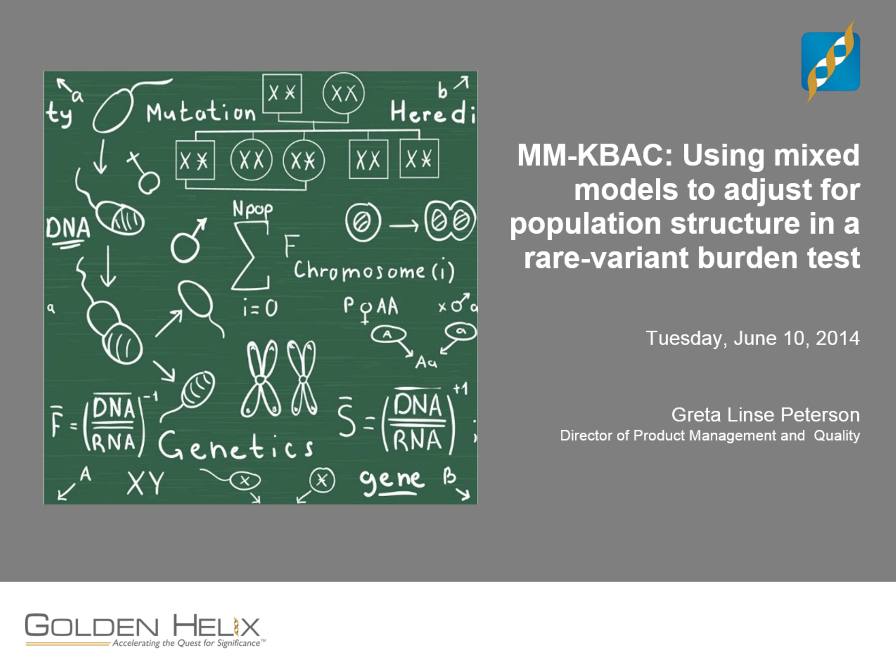MM-KBAC: Using mixed models to adjust for a population structure in a rare-variant burden test
Abstract
Confounding from population structure, extended families and inbreeding can be a significant issue for burden and kernel association tests on rare variants from next generation DNA sequencing. An obvious solution is to combine the power of a mixed model regression analysis with the ability to assess the rare variant burden using methods such as KBAC or CMC. Recent approaches have adjusted burden and kernel tests using linear regression models; this method adjusts for the relatedness of samples and includes that directly into a logistic regression model.
This webcast will focus on the details of bringing Mixed Model Regression and KBAC together, including: deriving an optimal logistic mixed model algorithm for calculating the reduced model score, how the kinship or random effects matrix should be specified, and how it all comes together into one algorithm. Results from applying the method to variants from the 1000 Genomes project will also be presented and compared to famSKAT.
About the Presenter

Greta Linse Peterson is Golden Helix's Director of Services. Her main duty is managing the Field Application Scientist and Customer Support teams. Greta and her team are also responsible for software quality control, ensuring that the software releases are subject to the most rigorous testing protocols and for all the technical documentation and tutorials. Greta joined Golden Helix in 2008 when she completed her Masters degree in both Mathematics and Statistics at Montana State University in Bozeman. When Greta is not working, she enjoys spending time with her family and hiking the surrounding areas of Bozeman.


